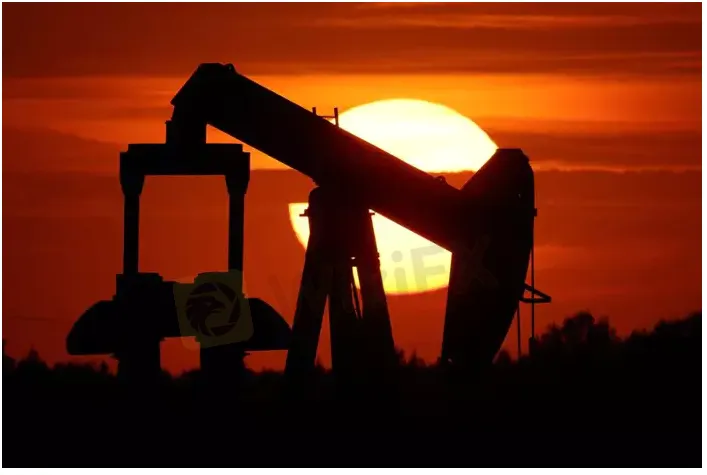简体中文
繁體中文
English
Pусский
日本語
ภาษาไทย
Tiếng Việt
Bahasa Indonesia
Español
हिन्दी
Filippiiniläinen
Français
Deutsch
Português
Türkçe
한국어
العربية
Oil prices fall more than 1% as dollar scales new peak
Abstract:Oil prices were mixed in early Asian trade on Wednesday as support from U.S. production cuts caused by Hurricane Ian contended with crude storage builds and a strong dollar.

Brent crude futures fell $1.02, or 1.2%, to $85.25 per barrel by 0630 GMT, while U.S. West Texas Intermediate (WTI) crude futures were down 97 cents, or 1.2%, at $77.53 per barrel. Both contracts had risen over 2% in the previous session.
The dollar hit a fresh two-decade peak against a basket of currencies on Wednesday as rising global interest rates fed recession concerns. A strong dollar reduces demand for oil by making it more expensive for buyers using other currencies. [FRX/]
Asian share markets sank as surging borrowing costs stoked fears of a global recession, spooking investors into the safe-haven dollar. [MKTS/GLOB]
“With Asian markets tanking due to the surge in bond yields, demand outlooks are darkened amid a possible nearing economic recession,” said Tina Teng, an analyst at CMC Markets.
“Traders‘ focus is not on the supply issues right now as the bond market’s turmoil sunk risk assets, along with a stubbornly high U.S. dollar, which pressured oil prices,” Teng added.
U.S. crude oil stocks rose by about 4.2 million barrels for the week ended Sept. 23, while gasoline inventories fell about 1 million barrels, according to market sources on Tuesday, citing figures from industry group the American Petroleum Institute.
Distillate stocks rose by about 438,000 barrels, according to the sources, who spoke on condition of anonymity. [API/S]
The report comes ahead of official Energy Information Administration data due on Wednesday at 4:30 p.m. EDT.
Goldman Sachs cut its 2023 oil price forecast on Tuesday, due to expectations of weaker demand and a stronger U.S. dollar, but said global supply disappointments only reinforced its long-term bullish outlook.
Producers began returning workers to offshore oil platforms after shutting in output ahead of Hurricane Ian, which entered the U.S. Gulf of Mexico on Tuesday and is forecast to become a dangerous Category 4 storm over the warm waters of the Gulf.
About 190,000 barrels per day of oil production, or 11% of the Gulfs total were shut-in, according to offshore regulator the Bureau of Safety and Environmental Enforcement (BSEE).
Producers lost 184 million cubic feet of natural gas, or nearly 9% of daily output. Personnel were evacuated from 14 production platforms and rigs, the BSEE said.
Ian is the first hurricane this year to disrupt oil and gas production in the U.S. Gulf of Mexico, which produces about 15% of the United States crude oil and 5% of its dry natural gas.

Disclaimer:
The views in this article only represent the author's personal views, and do not constitute investment advice on this platform. This platform does not guarantee the accuracy, completeness and timeliness of the information in the article, and will not be liable for any loss caused by the use of or reliance on the information in the article.
Read more

Bank Negara Malaysia Flags 12 New Companies for Unauthorised Activity
Bank Negara Malaysia (BNM) has updated its Financial Consumer Alert List (FCA List) by adding 12 more entities, reinforcing its efforts to warn the public against unregulated financial schemes. Check if your broker made the list!

TradingView Brings Live Market Charts to Telegram Users with New Mini App
TradingView has launched a mini app on Telegram, making it easier for users to track market trends, check price movements, and share charts.

March Oil Production Declines: How Is the Market Reacting?
Oil production cuts in March are reshaping the market. Traders are closely watching OPEC+ decisions and supply disruptions, which could impact prices and future production strategies.

How to Calculate Leverage and Margin in the Forex Market
Leverage amplifies both potential profits and risks. Understanding how to calculate leverage and margin helps traders manage risks and avoid forced liquidation.
WikiFX Broker
Latest News
Exposing the Top 5 Scam Brokers of March 2025: A Closer Look by WikiFX
Gold Prices Climb Again – Have Investors Seized the Opportunity?
Webull Launches SMSF Investment Platform with Zero Fees
Australian Regulator Warns of Money Laundering and Fraud Risks in Crypto ATMs
The Withdrawal Trap: How Scam Brokers Lure Victims into Paying More
FCA to Investors: Think Twice Before Trusting These Brokers
Trump\s tariffs: How could they affect the UK and your money
Trump gambles it all on global tariffs he\s wanted for decades
TradingView Brings Live Market Charts to Telegram Users with New Mini App
HTFX Spreads Joy During Eid Charity Event in Jakarta
Currency Calculator







